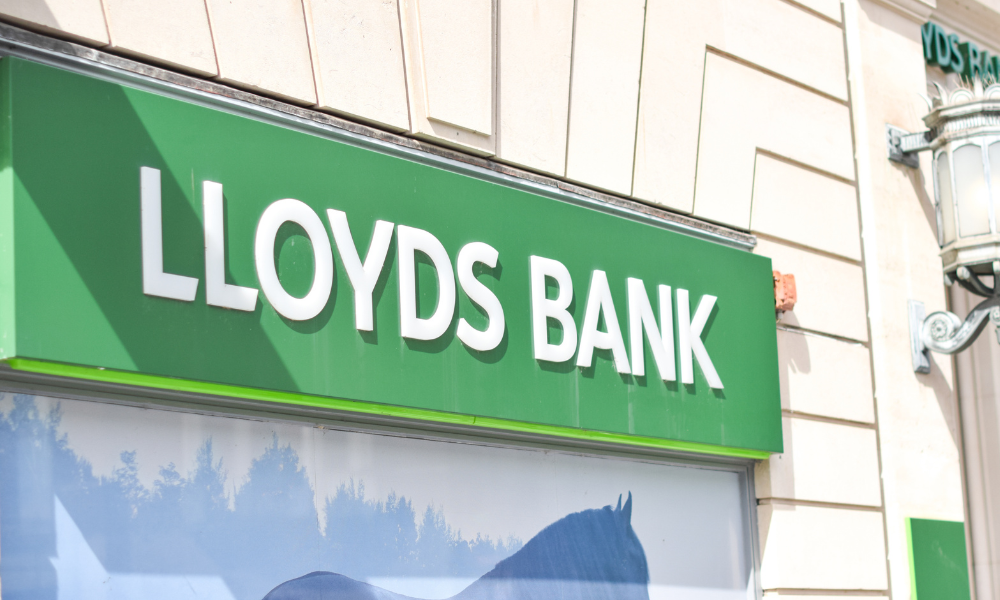Britain's biggest lender sees profits fall, shares drop

As global markets digest the consequences of President Donald Trump’s sweeping new tariff regime, Lloyds Banking Group has found itself grappling with the knock-on effects — not only from deteriorating economic sentiment, but also from the legacy of a festering consumer finance scandal.
The bank reported a £1.5 billion pre-tax profit for the first quarter of 2025, a decline of 7 per cent compared with the same period a year ago, as rising operational costs and a sharp increase in loan impairment charges overshadowed modest growth in lending.
Lloyds — widely seen as a bellwether for Britain’s economy due to its domestic focus and dominant position in mortgage lending — set aside £309 million for potential bad loans, a more than fivefold increase on the £57 million booked during the same period last year. A third of that figure was attributed to a £100 million central adjustment linked to uncertainty sparked by new U.S. tariffs introduced in early April.
While its retail banking operations — encompassing Halifax, Bank of Scotland and MBNA — remained broadly stable, the macroeconomic backdrop has shifted markedly since the start of the year. Trump’s levies, including a flat 10 per cent tariff on most UK goods, rattled international investors and prompted a reappraisal of global growth forecasts, even for lenders with limited overseas exposure.
Despite a £7.1 billion rise in loans and advances to customers and a four per cent increase in net income to £4.4 billion, Lloyds’ rising costs — which reached £2.6 billion, up 6 per cent year-on-year — diluted the benefit of higher revenues. The bank cited severance-related expenses and investment in strategic initiatives among the contributors to this rise.
Read more: Lloyds execs get nearly £2 million in bonuses amid cost-cutting measures
Charlie Nunn, now approaching his fourth year as chief executive, has sought to insulate Lloyds from global volatility by deepening its domestic footprint and pushing forward with a digital overhaul. But the bank is far from immune to external shocks — nor is it free of domestic turbulence.
Car Finance Scandal Still Lurking
Looming large over Lloyds is the UK motor finance scandal. The group has already earmarked £1.2 billion in provisions for potential customer redress linked to discretionary commission arrangements — a once-widespread industry practice now under regulatory scrutiny. The Financial Conduct Authority’s investigation continues, but a decisive moment could come with a forthcoming ruling by the Supreme Court.
Regulators have previously said such commission structures allowed brokers to inflate interest rates, often without borrowers’ full awareness. While the FCA banned the use of DCAs in 2021, the cost of historic remediation could be vast. Analysts at RBC Capital Markets have warned that Lloyds might face total liabilities of up to £4.6 billion in a worst-case scenario.
Read more: Lloyds execs get nearly £2 million in bonuses amid cost-cutting measures
Though Lloyds made no additional provision this quarter, investors remain jittery. The motor finance issue already contributed to a substantial hit to fourth-quarter earnings last year, when profits fell to £824 million.
Pressure Mounts Despite Resilient Credit Quality
One area of reassurance has been Lloyds’ credit portfolio. The bank said asset quality remained strong and default levels remained low. Analysts noted that the bulk of the higher impairments reflected cautious scenario planning, rather than specific deterioration in borrower performance.
Still, the mood among shareholders was subdued. Lloyds’ share price dipped nearly 2 per cent following the results release, as some investors balked at rising expenses and the lack of upward profit momentum. Others remain focused on the structural changes underway at the bank, including its plan to shutter 27 branches in May and ongoing reviews affecting thousands of technology roles.
Interest income — long the cornerstone of Lloyds’ earnings model — remained broadly flat at £3.3 billion. With the Bank of England having cut rates from 5.25 per cent to 4.5 per cent over the past nine months, and further easing its forecast for the year ahead, pressure is mounting on lenders to diversify income streams. Lloyds, like many of its peers, enjoyed record profitability in 2024 amid elevated rates. That tailwind is now subsiding.
Looking Ahead
For Nunn and his executive team, the coming months could be decisive. A potential ruling on motor finance compensation, combined with the longer-term effects of Trump’s protectionist trade measures, threaten to constrain the bank’s performance even as it pushes to modernise and expand its digital footprint. In his statement to investors, Nunn maintained a forward-looking tone, reaffirming Lloyds’ commitment to strategic transformation and emphasising the group’s role in supporting UK households and businesses. But the market will be watching carefully — not just for signs of recovery, but for evidence that Lloyds can navigate a volatile and costly new phase in its long history.



